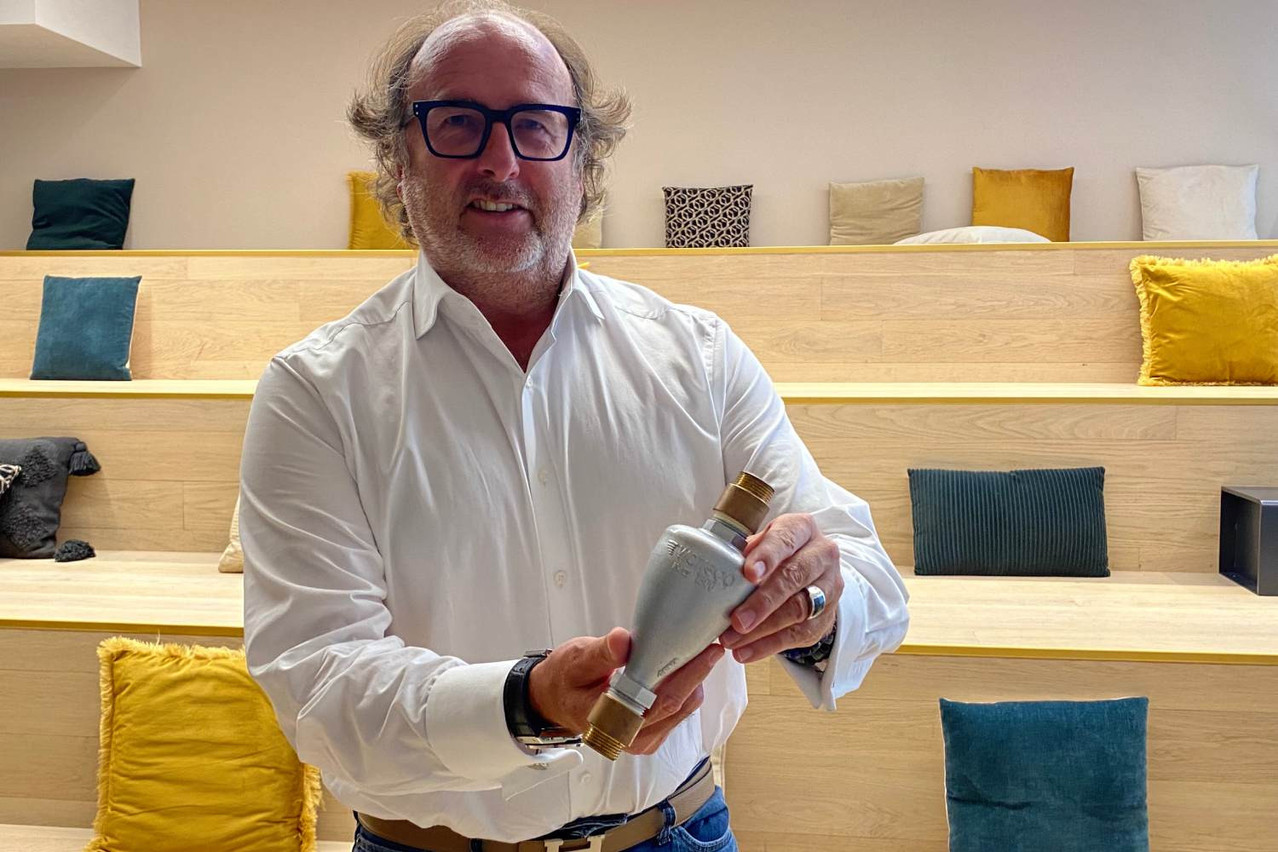Håkan Grönlund is no stranger to ice. The former Swedish professional hockey player spent enough time on the ice in the Swedish league between 1977 and 1992, then in Luxembourg at the Tornado and Beaufort, and all over the world as Luxembourg’s national coach, to appreciate the importance of removing air bubbles. The technical process involves bringing the water up to exactly 85 degrees, the point at which the air bubbles evaporate, and then cooling it very quickly. The ice is then perfect for skating!
What an environmental and energy nightmare, the future CEO of H20 Vortex thought, until Swedish engineers came up with a revolutionary technology. This would be an object that looks like a chair leg. Senior advisor (and former banker) Alain Mestat calls it a “braid,” and explains that its design takes advantage of the laws of physics: water enters at its usual pressure (three to four bars), is drawn into cavities that create a vortex--which has several impacts--and emerges again.
Big customers like NHL teams
“We remove the air bubbles without needing to heat the water, which can reduce an ice rink’s operating costs by 40%, for example, by improving the quality of the ice,” says Mestat. The Luxembourg company has already captured 17% of the global market--1,700 of the 10,000 ice rinks in the world--including some of the prestigious franchises of the NHL, the American/Canadian professional ice hockey league.
The Kockelscheuer ice rink doesn’t use it, even though the technology could enable savings of between €85,000 and €120,000.
Grönlund and Mestat at one point realised that this technology, dubbed “Vortex Process Technology” (VPT), could be relevant elsewhere: cooling towers, aeration and air-conditioning systems, irrigation systems in agriculture or fish farming… the list is long. It can reduce water use by 50%, cut energy consumption by 5-10%, reduce the consumption of chemicals to sanitise water by 100% (and reuse 100% of the water required for other purposes). The return on investment varies from 18 months to three years, depending on the situation, numbers that speak loudly to economic players.
Explains Mestat: “To understand the technology, you need to look at four aspects for five minutes. First, our technology eliminates air bubbles and makes the water less viscous, so that it can cover more surface area. Second, its density increases by around 5%, which reinforces the thermodynamic properties of water. Third, in our product, vacuum and pressure continuously destroy all bacteria, so there’s no need for chemicals. And finally, changing the structure of the water breaks down the calcium into calcite molecules, which prevents limescale build-up in water systems.”
Ready-to-use containers
The list of customers is growing by the day. “Even Marriott has chosen to equip one of its 300-room hotels with air conditioning, and the water, which is purer than the water that goes into our system, is used to water their golf course,” explains Mestat. Already profitable, H2O Vortex aims to double its sales next year to €20m.
The company has embarked on a strategic shift, not unlike that of two other Luxembourg companies also committed to protecting the environment (Apateq with its water purification system and with its solar panel manufacturing technology): the use of containers.
Instead of having to overhaul everything in its clients’ facilities, H2O Vortex could drop off a fully equipped container, to which you simply have to connect four pipes and voila: technology guaranteed for life, complete with electronics that measure its operation in real time.
“In Bissen, we could help reduce the water consumption of Google’s datacentre by 75%, but Google refuses to hear about our technology,” says Mestat.
The Luxembourg company, backed by its patented technology, its 3D printing production facility in Malmö (16 engineers) and its international awards, has started to test the waters with private equity investors: in a market worth several trillion euros--there are five million cooling towers in the world, for example--having the capital to be able not to sell its equipped containers, but to rent them out and offer a win-win deal to different types of customer would make even more sense.
This article was first published in French on . It has been translated and edited for Delano.
